Discover 35 hidden attractions, cool sights, and unusual things to do in Stuttgart (Germany). Don't miss out on these must-see attractions: Mercedes-Benz Museum, Wilhelma, and Porsche Museum. Also, be sure to include New Palace in your itinerary.
Below, you can find the list of the most amazing places you should visit in Stuttgart (Baden-Württemberg).
Table of Contents
Mercedes-Benz Museum
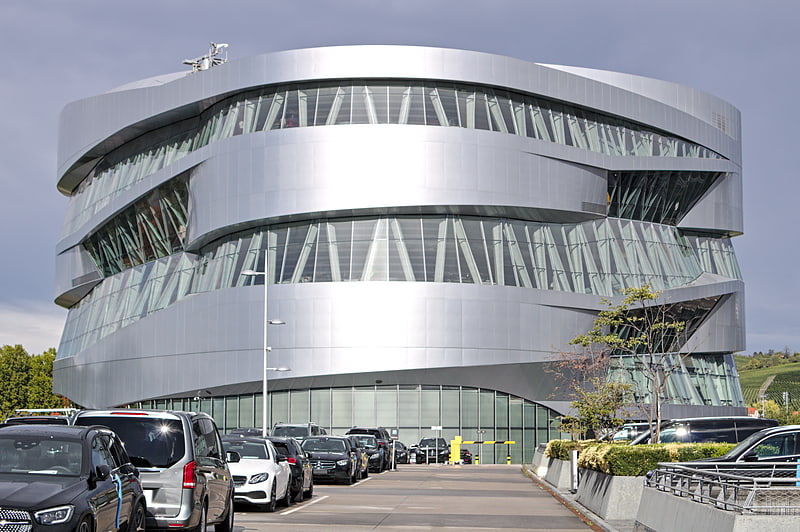
Also known as: Mercedes-Benz Welt
Automobile museum with vintage cars. The Mercedes-Benz Museum is an automobile museum in Stuttgart, Germany. It covers the history of the Mercedes-Benz brand and the brands associated with it. Stuttgart is home to the Mercedes-Benz brand and the international headquarters of the Mercedes-Benz Group.[1]
Address: Mercedesstraße 100, 70372 Stuttgart (Bad Cannstatt)
Wilhelma

Zoo and botanical gardens in huge park. Wilhelma is a zoological-botanical garden in Stuttgart in the Bad Cannstatt district in the north of the city on the grounds of a historic castle. Wilhelma Zoo is one of the most popular tourist destinations in Baden-Württemberg, seeing more than 2 million visitors annually.
The Zoo and Botanical Garden have been staffed since 1846. The Moorish Revival style echoing the Alhambra have been maintained and supplemented since 1960. Today, the zoo has an area of about 30 hectares (0.30 km2), houses around 11,500 animals from around the world composed of roughly 1,200 species and roughly 6000 plants from all climates. Of Germany's zoos, Wilhelma's collection ranks second to the Berlin Zoological Garden. In addition to the public garden, Wilhelma also has a branch office located in Fellbach, where the zoo keeps its stallions.
Wilhelma receives gorilla juveniles rejected by their mother and reared by the zookeepers. At age 2-3, the gorillas are sent back to their original zoo(s).[2]
Address: Stuttgart, Wilhelma 13, 70376 Stuttgart, Germany
Porsche Museum

Also known as: Porsche-Museum
Showcase of legendary racing cars. The Porsche Museum is an automobile museum in the Zuffenhausen district of Stuttgart, Germany on the site of carmaker Porsche.[3]
Address: Porscheplatz 1, 70435 Stuttgart (Zuffenhausen)
New Palace
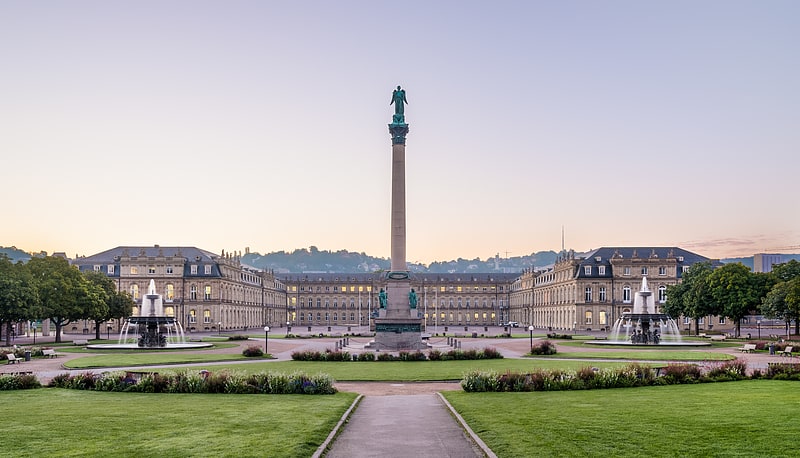
Also known as: Neues Schloss
Ornate castle and home to state ministries. The New Palace is an 18th-century Baroque palace in Stuttgart and is one of the last large city palaces built in Southern Germany. The palace is located in the on the Schlossplatz in front of the Jubiläumssäule column and Königsbau. Public tours of the building are only permitted by special arrangement, as the building contains some government offices. Once a historic residence of the Kings of Württemberg, the New Palace derives its name from its commissioning by Duke Carl Eugen of Württemberg to replace the Old Castle in the early years of his reign. Originally, Charles commissioned Nikolaus Friedrich Thouret, but architects Leopold Retti, Philippe da la Guepière, Reinhard Heinrich Ferdinand Fischer would contribute to the design, history, and construction of the palace.
The palace was heavily bombed in World War II, leaving only a shell. It was finally agreed to rebuild it in 1957.[4]
Address: Stuttgart, Stuttgart Schlossplatz 4, 70173 Stuttgart
Solitude Palace
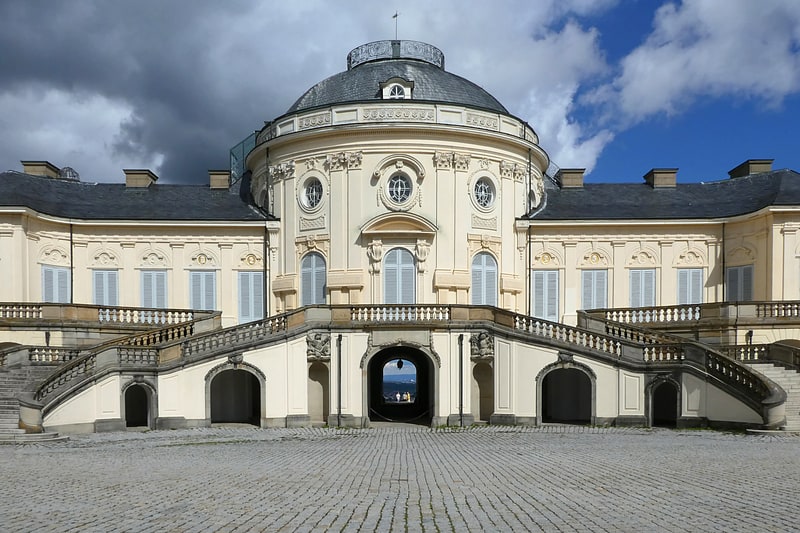
Also known as: Schloss Solitude
Late Baroque palace with trails and views. Solitude Palace is a Rococo schloss and hunting retreat commissioned by Charles Eugene, Duke of Württemberg. It was designed by Johann Friedrich Weyhing and Philippe de La Guêpière, and constructed from 1764 to 1769. It is located on an elongated ridge between the towns of Leonberg, Gerlingen and Stuttgart in Baden-Württemberg.[5]
Fernsehturm Stuttgart

Also known as: Stuttgarter Fernsehturm
Iconic TV tower with a cafe and views. Fernsehturm Stuttgart is a 216.61 m telecommunications tower in Stuttgart, Germany. It was the first telecommunications tower in the world constructed from reinforced concrete, and it is the prototype for many such towers worldwide. Although controversial at first, it quickly became a well known landmark of Stuttgart and a tourist attraction.[6]
Address: Jahnstr. 120, 70597 Stuttgart (Sillenbuch)
Kunstmuseum Stuttgart
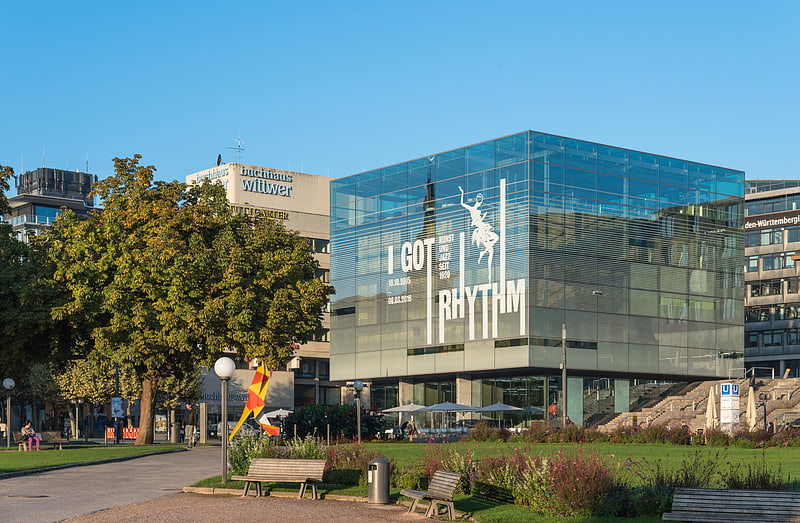
Museum of modern and contemporary art. The Kunstmuseum Stuttgart is a contemporary and modern art museum in Stuttgart, Germany, built and opened in 2005.[7]
Address: Kleiner Schloßplatz 1, 70173 Stuttgart (Mitte)
Killesbergpark
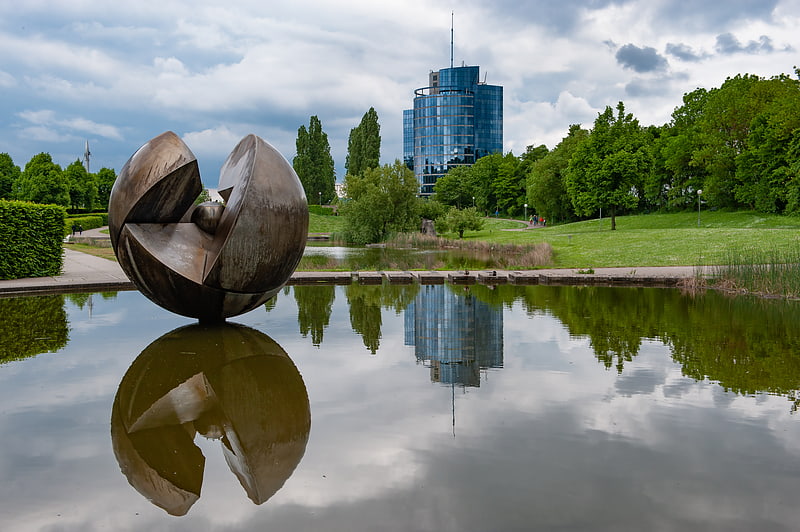
Also known as: Höhenpark Killesberg
State park in Stuttgart, Germany. The Killesbergpark is an urban public park of half a square kilometre in Stuttgart, Germany. It is just north of the state capital, where Killesberg is a quarter of the borough of Stuttgart-Nord.
The park dates back to the horticultural show of 1939. Before the show, a large area of the park had been a quarry. It was transformed into a park with exhibition sites for the show, and has remained, hosting horticultural events on a regular basis, including the “Bundesgartenschau” and the IGA (Internationale Gartenbauausstellung), both garden festivals.
The Killesbergpark bordered for many years the city's fairgrounds. In 2007, Messe Stuttgart moved to new ground close to Stuttgart Airport.
Every July the park hosts the popular Lichterfest Stuttgart. Thousands of lanterns are placed around the park, decorating the park for a variety of family activities throughout. After dark, there is a fireworks show accompanied by music. Visitors often bring blankets to sit on for the show.[8]
Address: Beim Höhenfreibad, 70192 Stuttgart (Stüttgart Nord)
Old Castle
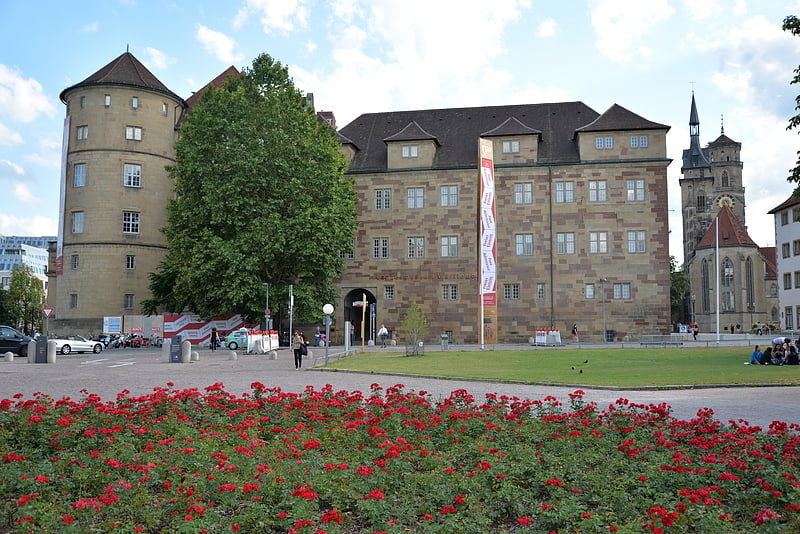
Also known as: Altes Schloss
10th-century castle and history museum. The Old Palace is a former castle located on the Schillerplatz in Stuttgart, Germany. The castle, originally a water castle dating back to the 10th century, was the residence of the Counts and later some Dukes of Württemberg and today is the home of the Landesmuseum Württemberg. The castle church still functions as a place of worship.[9]
Address: Schillerplatz 6, Stuttgart (Mitte)
Stuttgarter Rathaus
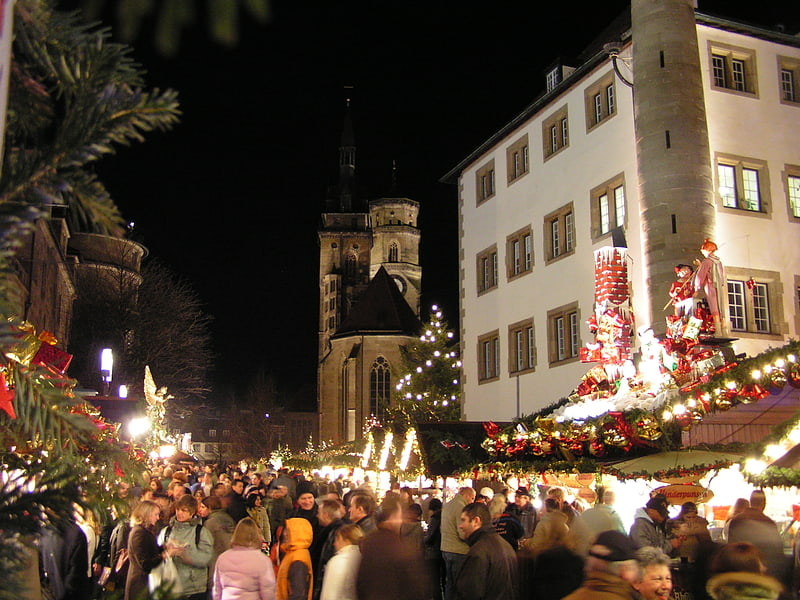
Stuttgart Christmas Market, known in German as the Stuttgarter Weihnachtsmarkt is a Christmas market that takes place every year during Advent in the German city of Stuttgart.[10]
Birkenkopf
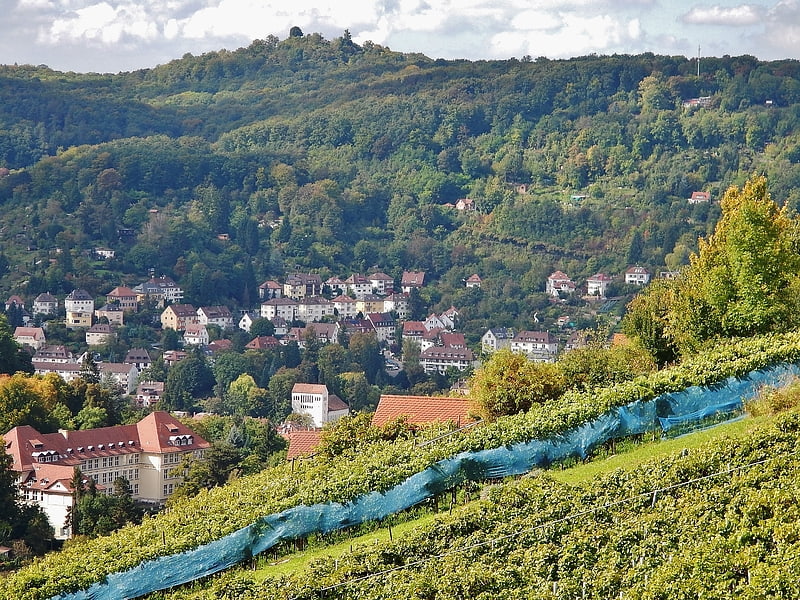
Schuttberg in Germany. The Birkenkopf is a prominent hill in Stuttgart, Germany. At an elevation of 511m, is almost 260m higher than city centre. It is in part a Schuttberg, an artificial hill built from the ruins and rubble from World War II.
During the war, 53 Allied bombing missions destroyed over 45% of Stuttgart, and nearly the entire city center. Between 1953 and 1957, 1.5 million cubic meters of rubble were cleared and moved to the hill, which resulted in an increase in height of around 40 meters. At the summit there are many recognizable facades from ruined buildings. The locals colloquially call the Birkenkopf "Monte Scherbelino", which roughly translates as "Mount Shards" but in an expression alluding to Italian. One of the pieces of rubble has a plaque attached to it, which says: Dieser Berg nach dem Zweiten Weltkrieg aufgetürmt aus den Trümmern der Stadt steht den Opfern zum Gedächtnis den Lebenden zur Mahnung. This translates roughly as: This mountain, after World War II piled up from the ruins of the city, stands as a memorial to the victims and a reminder to the living.
From the summit the whole city center can be seen, and on a clear day the view extends to the Swabian Alb, to the Black Forest, and the lowlands of Württemberg. On the summit there is a steel cross, which in 2003 replaced the original 1953 wooden cross. In the summer, early morning services are held here on Sundays.[11]
Rosenstein Palace

Also known as: Schloss Rosenstein
Museum in Stuttgart, Germany. Rosenstein Castle is a palace in Stuttgart, Germany. It was designed in the classical style by the architect and court builder Giovanni Salucci as the summer palace for King Wilhelm I of Württemberg and was built between 1822 and 1830.
Today, the building houses that part of the State Museum of Natural History Stuttgart dealing with extant lifeforms.[12]
Address: Rosenstein 1, 70191 Stuttgart (Bad Cannstatt)
Württemberg Mausoleum
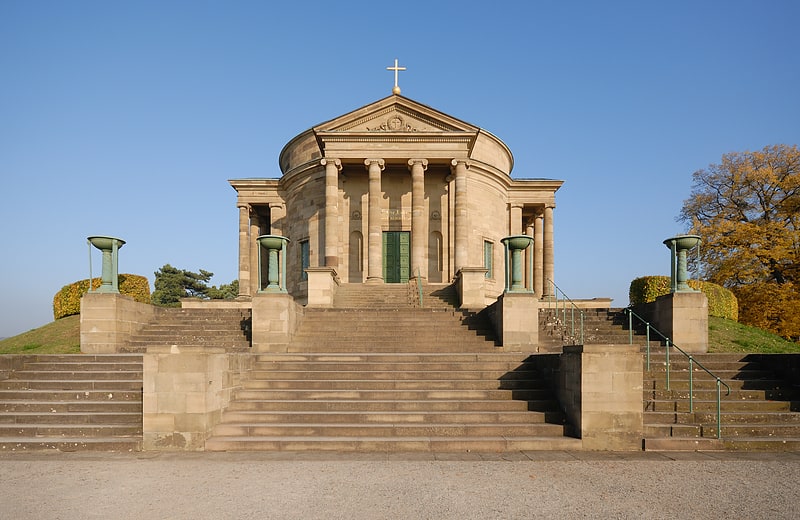
Also known as: Grabkapelle auf dem Württemberg
Historical landmark in Stuttgart, Germany. The Württemberg Mausoleum is a mausoleum located on the Württemberg, in the Rotenberg borough of Untertürkheim, in Stuttgart. It was designed by Giovanni Salucci for King William I of Württemberg to house the remains his second wife, Catherine Pavlovna of Russia. Construction elapsed over four years, from 1820 to 1824, while work on its decor lasted another four years. The remains of William I, Catherine, and their daughter Maria Friederike Charlotte, are housed in the mausoleum.
Around 40,000 people visited the Mausoleum in 2018.[13]
Address: Württembergstraße 340, 70327 Stuttgart (Untertürkheim)
Collegiate Church
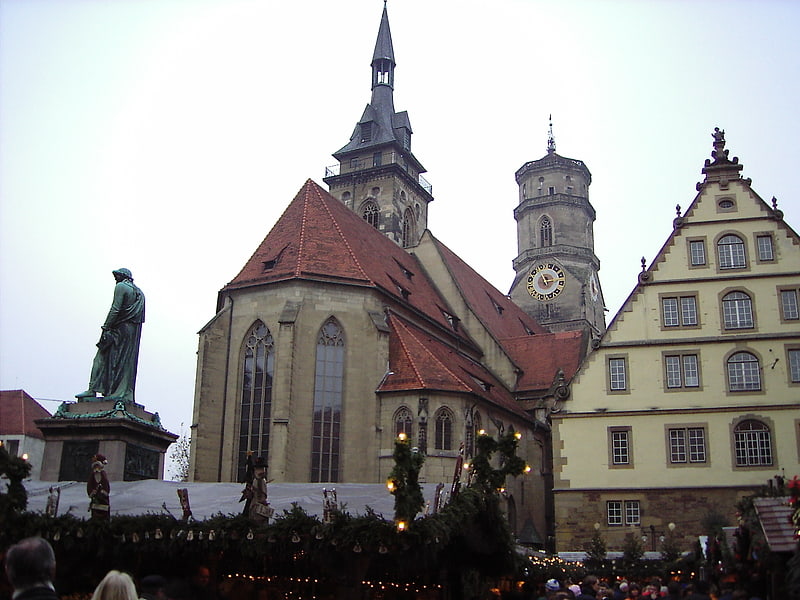
Also known as: Stiftskirche
Grand church with bells and a pipe organ. The Stiftskirche is an inner-city church in Stuttgart, the capital of Baden-Württemberg, Germany. It is the main church of the Evangelical-Lutheran Church in Württemberg as well as the parish church of the evangelical inner-city church district of Stuttgart.[14]
Address: Stiftstraße 12, 70173 Stuttgart (Mitte)
Landesmuseum Württemberg
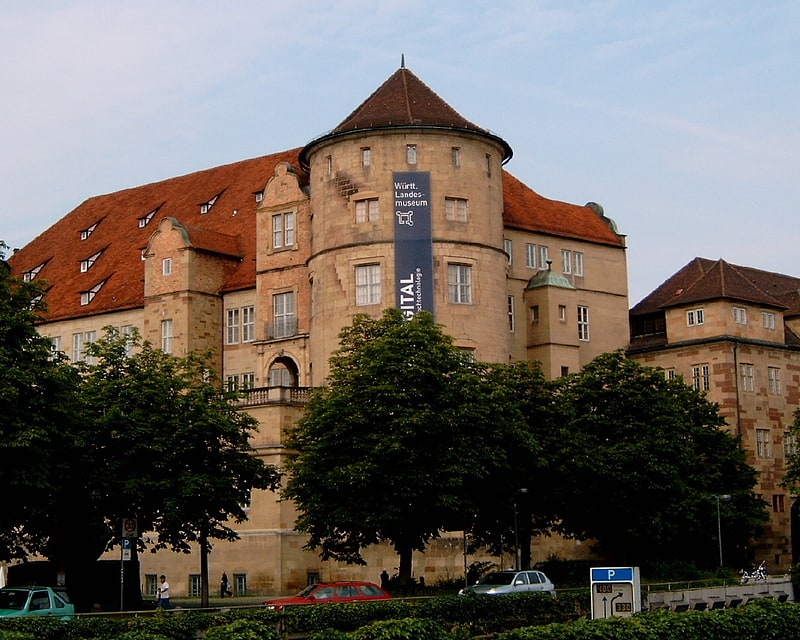
Museum in Stuttgart, Germany. The Landesmuseum Württemberg is the main historical museum of the Württemberg part of the German state of Baden-Württemberg. It emerged from the 16th-century “Kunstkammer” of the dukes, later kings, of Württemberg who resided in Stuttgart. As a museum it was founded in 1862 by King William I.[15]
Address: Schillerpl. 6, 70173 Stuttgart (Mitte)
Wilhelma-Theater
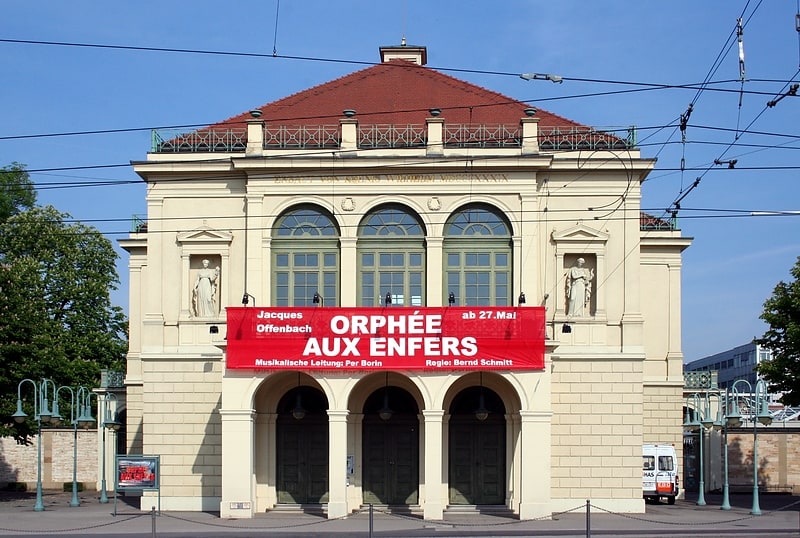
Theatre in Stuttgart, Germany. Wilhelma-Theater is a theatre in Stuttgart, Baden-Württemberg, Germany.[16]
Address: Neckartalstr. 9, 70376 Stuttgart (Bad Cannstatt)
Rosenstein Park
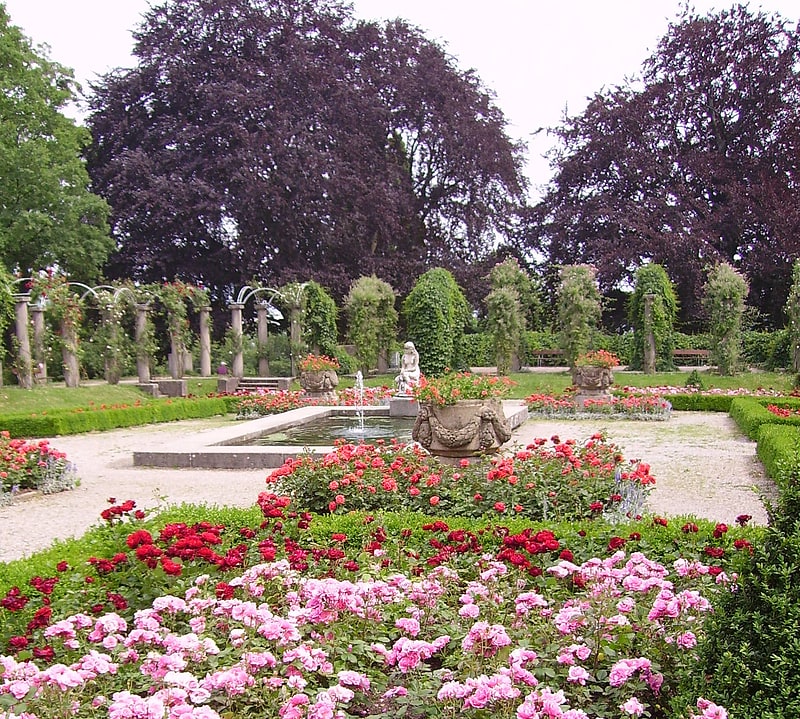
Also known as: Rosensteinpark
Park in Stuttgart, Germany. The Rosenstein Park in Stuttgart is the largest English garden in southwest Germany. Its creation took place from 1824 to 1840 on the orders of King William I of Württemberg after plans of his gardener Johann Bosch on the former Kahlenstein area. From 1817 to 1818 King William I had purchased all land on the Kahlenstein from the citizens of Cannstatt.
In the middle of the park the Rosenstein Palace was built from 1822 to 1830. The Wilhelma zoo and the State Museum of Natural History Stuttgart are also located in the park. The Löwentor (Lion's Gate) at the upper park entrance was built by Giovanni Salucci. The Rosenstein Tunnel is a railway tunnel beneath the park.
Today the park is owned by the State of Baden-Württemberg and preserved as a historical monument. In conjunction with the Schlossgarten, the Leibfried Garden, the Wartberg and the Killesbergpark it forms Stuttgart's „Green U“. Because of the ban on hunting within the park it boasts 98.9 hares per 100 ha, the highest concentration of hares in Germany.[17]
Staatsgalerie Stuttgart
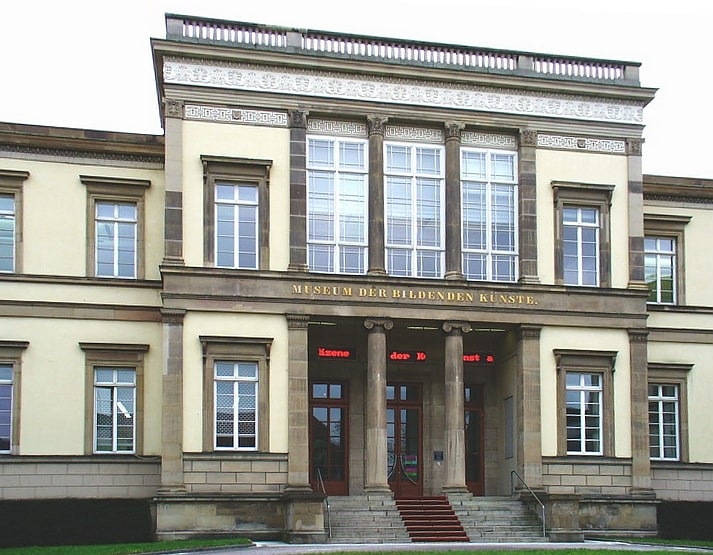
Museum in Stuttgart, Germany. The Staatsgalerie Stuttgart is an art museum in Stuttgart, Germany, it opened in 1843. In 1984, the opening of the Neue Staatsgalerie designed by James Stirling transformed the once provincial gallery into one of Europe's leading museums.[18]
Address: Konrad-Adenauer-Straße 30-32, 70173 Stuttgart (Mitte)
Sternwarte
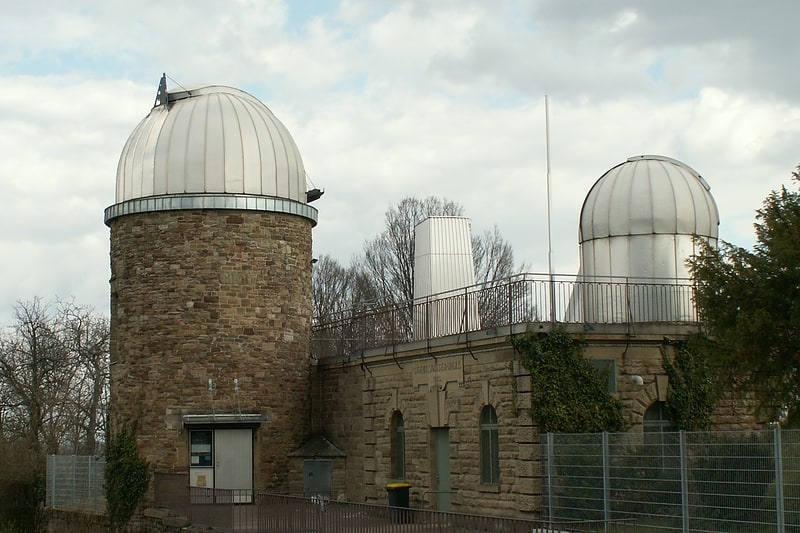
Astronomical observatory. Stuttgart Observatory is an astronomical observatory owned and operated by the association Schwäbische Sternwarte e.V. It is located on the Uhlandshöhe in Stuttgart, Germany. Public tours have been held since 1920 and the observatory claims to be one of the oldest in Germany.[19]
Address: Zur Uhlandshoehe 41, 70188 Stuttgart (Stüttgart Ost)
Staatliches Museum für Naturkunde Stuttgart
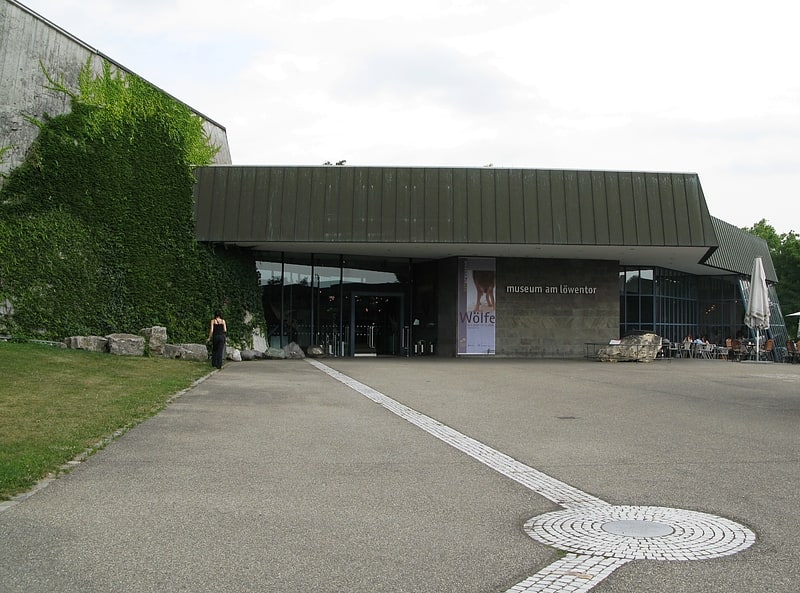
Museum in Stuttgart, Germany. The State Museum of Natural History Stuttgart, abbreviated SMNS, is one of the two state of Baden-Württemberg's natural history museums. Together with the State Museum of Natural History Karlsruhe it is one of the most important repositories for state-owned natural history collections.
Exhibitions are shown in two buildings, both situated in the Rosenstein park in Stuttgart: the Löwentor Museum houses the paleontology and geology exhibitions, while the Museum Rosenstein in Rosenstein Palace focuses on biology and natural history. Every year, the SMNS is visited by about 110,000 people.[20]
Address: Rosenstein 1, 70191 Stuttgart (Stüttgart Nord)
Max-Eyth-See
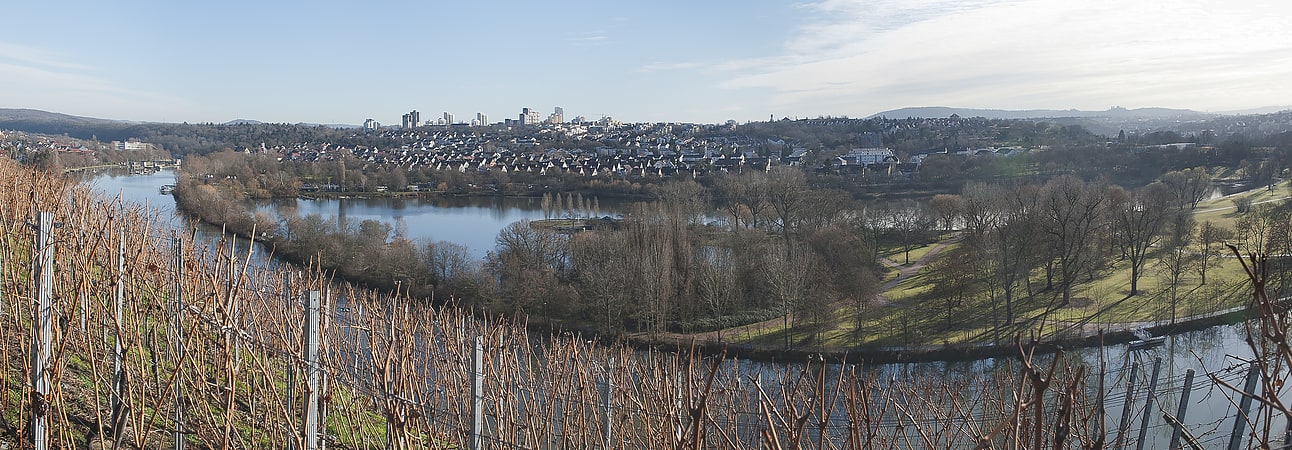
Lake in Germany. Max-Eyth-See is a lake at Stuttgart-Hofen in Baden-Württemberg, Germany. It was created in 1935 by reclaiming a former quarry and is now an official nature reserve. At an elevation of 214 m, its surface area is approximately 17.3 ha.[21]
Address: Mühlhäuser Str. 271, 70376 Stuttgart (Mühlhausen)
Schlossplatz
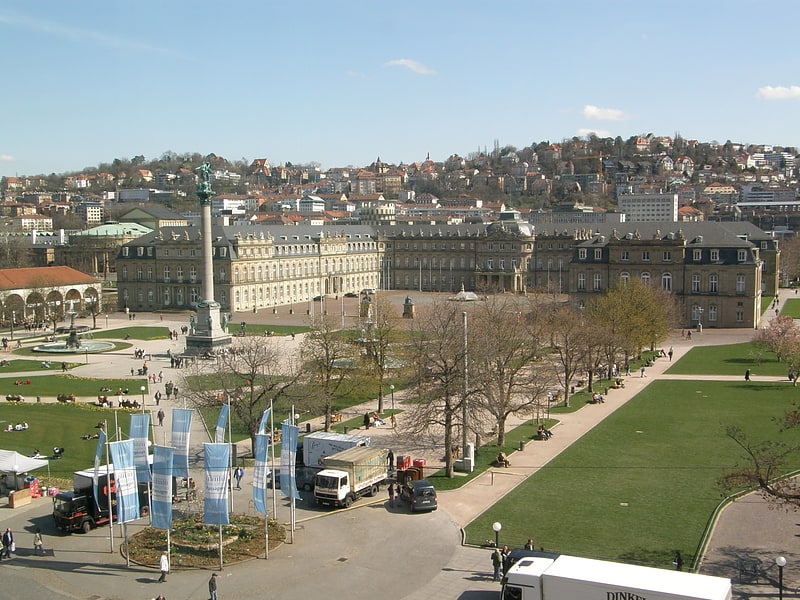
Also known as: Schloßplatz
Square with fountains, column and gardens. Schlossplatz is the largest square in Stuttgart Mitte and home to the Neues Schloss which was built between 1746 and 1807. From its construction until the mid-1800s it was used as a military parade ground and not open to general public use. It stands next to two other popular squares in Stuttgart: Karlsplatz to the south and Schillerplatz to the south west. The Königstraße bisects the plaza from north to south.
The Neues Schloss Palace and grounds have been public property since 1918.
Along with much of Stuttgart Mitte, Neues Schloss was heavily damaged during the Allied Bombing of World War II and the building was restored from 1958-1964 with a modernized interior that houses the ministries of Culture and the Treasury for the government of Baden-Württemberg.
Until the 1960s the King Street that bisects the plaza carried auto and truck traffic. Since that time the Stuttgart underground has built an underground station and tunnels were built to redirect traffic away from the plaza and Königstraße.
The entire square was last fully renovated in 1977 to mark the staging of the Bundesgartenschau (State Garden Show) in Stuttgart. The lawns and flowerbeds were renewed in 2006 following the staging of the 2006 World Cup Finals.[22]
Hegel House
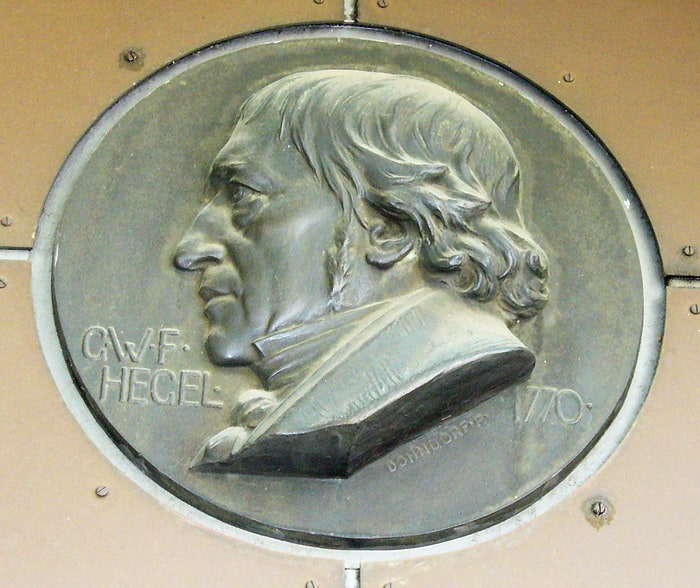
Also known as: Hegelhaus
Museum in Stuttgart, Germany. The Hegel House is a museum in Stuttgart, Germany, located in the house where the philosopher Georg Wilhelm Friedrich Hegel was born.
Born in 1770, Hegel lived in Stuttgart for the first 18 years of his life; he died in Berlin in 1831. The Hegel House is on Eberhardstraße, and dates from the 16th century.
The ground floor contains an exhibition about Stuttgart during Hegel's lifetime. Another exhibition is devoted to Hegel's life story, and includes his famous beret and his Stammbuch (an early form of friendship book). A third room contains a text collage of key quotations from Hegel, and various editions of his works in different languages.[23]
Address: Eberhardstraße 53, 70173 Stuttgart (Mitte)
Staatstheater Stuttgart
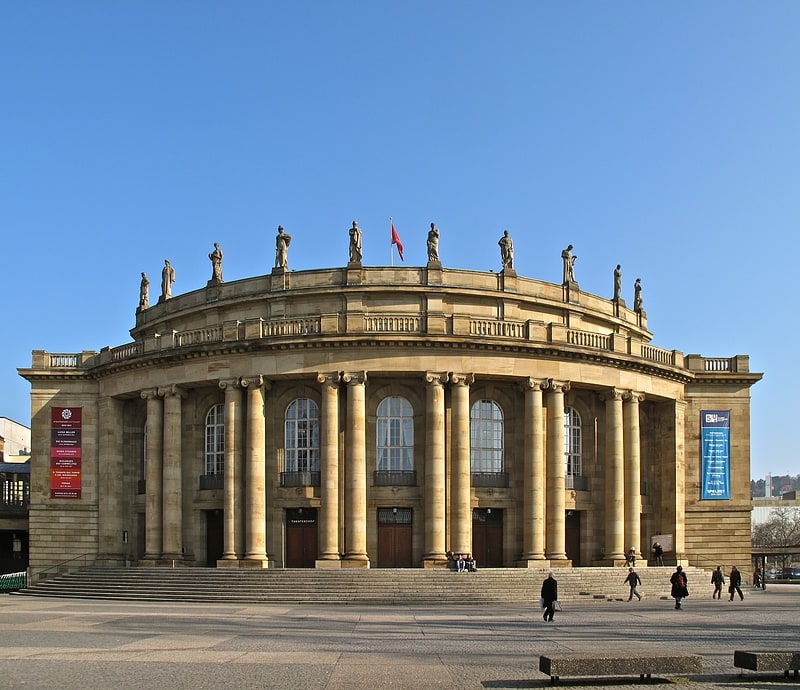
Theatre in Stuttgart, Germany. The Staatstheater Stuttgart is a theatre with three locations, Oper Stuttgart, Stuttgarter Ballett, and Schauspiel Stuttgart, in Stuttgart, Germany. The state that its name refers to is Baden-Württemberg.[24]
Address: Stuttgart, Oberer Schloßgarten 6
Linden-Museum
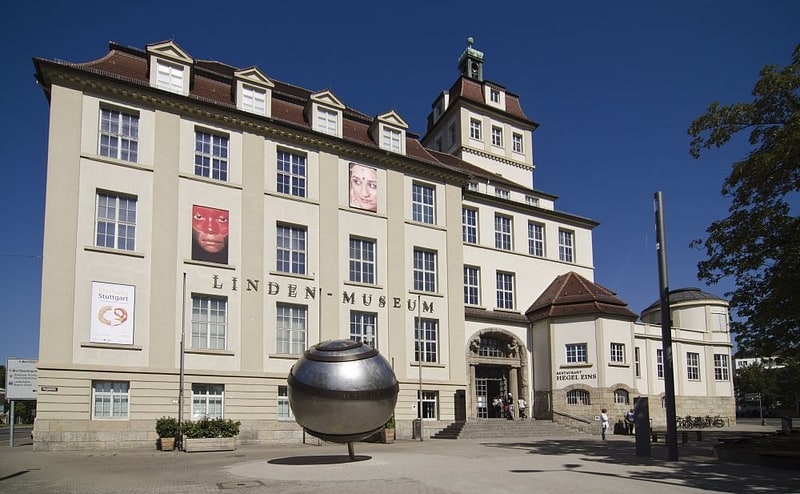
Ethnological displays in 1911 building. The Linden Museum is an ethnological museum located in Stuttgart, Germany. The museum features cultural artifacts from around the world, including South and Southeast Asia, Africa, the Islamic world from the Near East to Pakistan, China and Japan, and artifacts from North and Latin America and Oceania.
The museum traces its origins to the collection of objects amassed by the Verein für Handelsgeographie (Association for Trade Geography) in the 19th century. The namesake of the museum is Karl Graf von Linden (1838–1910) who, as president of the Stuttgart Verein für Handelsgeographie, took an interest in assembling and organizing the collection, and invited explorers of the caliber of Sven Hedin and Roald Amundsen to Stuttgart.
In 1911, the collection was established as a private museum and its current building was constructed. After suffering extensive damage during World War II, the building was restored in the 1950s and the municipality became its custodian. Since 1973, the museum has been jointly administrated by the city of Stuttgart and the state of Baden-Württemberg.[25]
Address: Hegelplatz 1, 70174 Stuttgart (Mitte)
Killesbergturm
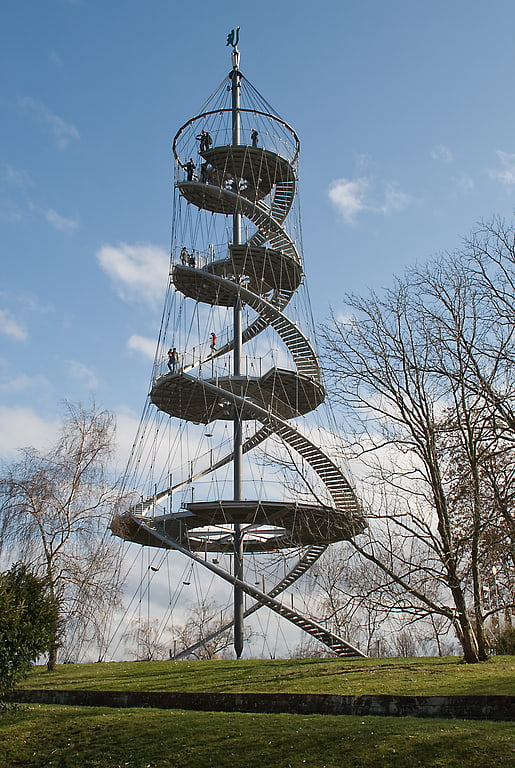
Observation deck in Stuttgart, Germany. The Killesberg Tower is a 40.4-meter high observation tower located in the Killesberg Park in Stuttgart, Germany. Originally planned for the 1993 World Horticultural Exposition, it was erected only in 2001.[26]
Schillerplatz
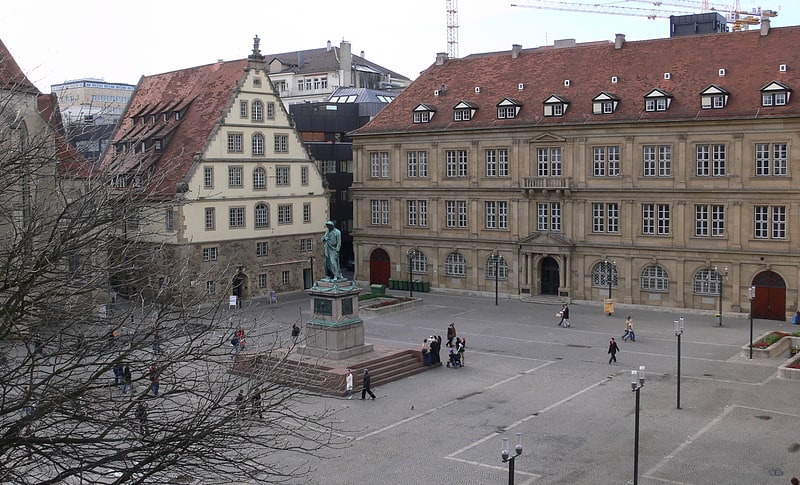
Landmark cobblestone square with vendors. Schillerplatz is a square in the old city centre of Stuttgart, Germany named in honour of the German poet, philosopher, historian, and dramatist Friedrich Schiller. Schillerplatz stands to the south west of Stuttgart's main square, Schlossplatz.[27]
Address: Schillerplatz Square, 70173 Stuttgart (Mitte)
Wilhelm Palais

Also known as: Wilhelmspalais
Palace. The Wilhelmspalais is a Palace located on the Charlottenplatz in Stuttgart-Mitte. It was the living quarters of the last Württemberg King Wilhelm II. It was destroyed during World War II and between 1961 and 1965 reconstructed in modern style. The central library of the town, the Stadtbibliothek Stuttgart was situated in this building from 1965 until 2011. Since 2018 the City Museum of Stuttgart is situated in Wilhelm Palais.[28]
Address: Konrad-Adenauer-Straße 2, 70173 Stuttgart (Mitte)
Hohenheim Gardens
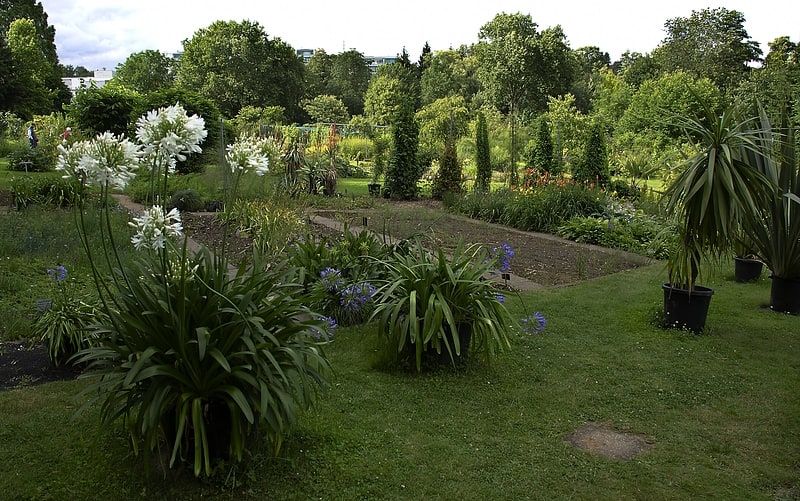
Also known as: Hohenheimer Gärten
Botanical garden in Stuttgart, Germany. With an area of more than 30 hectares, the Hohenheim Gardens are the largest part of the campus of the University of Hohenheim in Stuttgart, Baden-Württemberg, Germany. The oldest part of the garden, the Exotic Garden or Franziskas Dörfle, was established in 1776 by Duke Carl Eugen von Württemberg and Franziska von Hohenheim. Today, the Hohenheim Gardens are home to around 3000 taxa of woody plants as well as numerous monuments and works of art from four centuries. Over 150 woody plants are more than 100 years old. The Hohenheim Gardens are open all year round, all day and free of charge.[29]
Stuttgart Cathedral
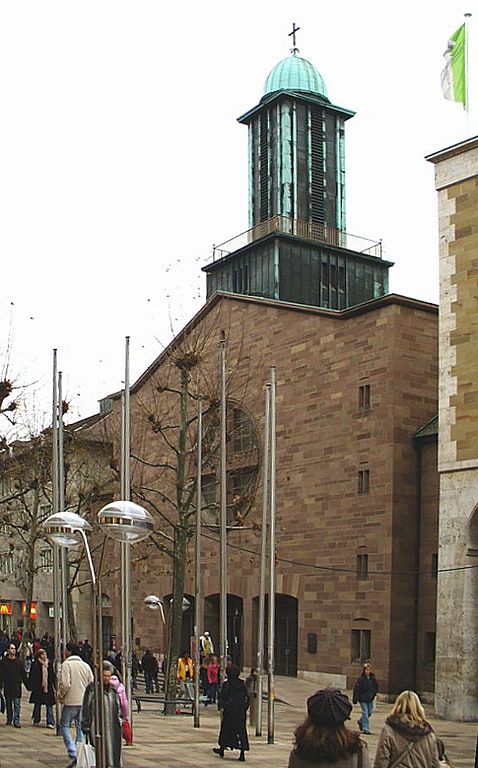
Also known as: Domkirche St. Eberhard
Catholic church in Stuttgart, Germany. Stuttgart Cathedral or St Eberhard's Cathedral is a church in the German city of Stuttgart. It is dedicated to Saint Eberhard of Salzburg. Since 1978, it has been co-cathedral of the Roman Catholic Diocese of Rottenburg-Stuttgart, whose main cathedral is Rottenburg Cathedral - the church's promotion marked the 150th anniversary of the diocese and its renaming as the Diocese of Rottenburg-Stuttgart. The parish dates back to the Medieval era while the current building was completed in 1955, eleven years after it was mostly destroyed by Allied air raids in 1944.[30]
Address: Königstraße 7A, 70173 Stuttgart (Mitte)
Zuffenhausen
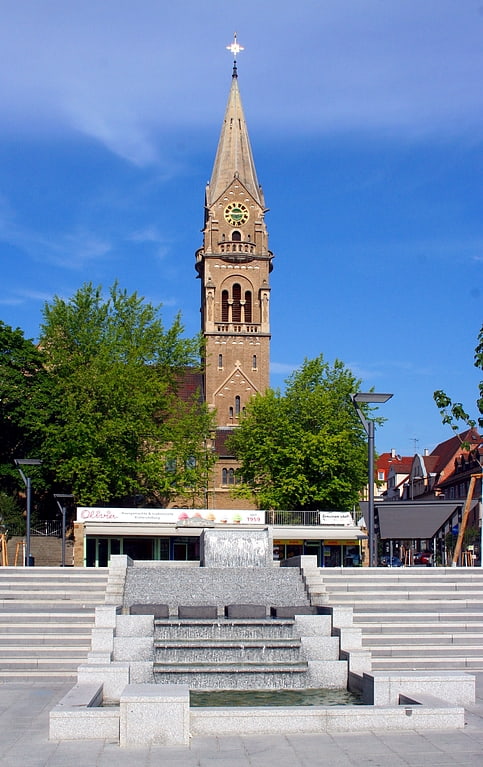
Zuffenhausen is one of three northernmost boroughs of the city of Stuttgart, capital of the German state of Baden-Württemberg. The borough is primarily an incorporation of the formerly independent townships Zuffenhausen, Zazenhausen, Neuwirtshaus, and Rot, the latter is a historic town that gained importance in 1945 as a refugee camp for German refugees. As of 2009 around 35,000 people lived in Zuffenhausen's area of 1,200 ha, making it the third largest of Stuttgart's outer boroughs. Zuffenhausen is also one of the oldest continuously inhabited places in Stuttgart with evidence of permanent settlements that can be traced back 7,500 years.
The etymological roots of "Zuffenhausen" are assumed to be found in the name of a seventh century Alemanni settler "Uffo" or "Offo". The oldest known official denotation as a property of Bebenhausen Abbey by Pope Innocent III dates to May 18, 1204. Zuffenhausen was proclaimed a city in 1907, yet soon financially badly affected by the Great Depression, Zuffenhausen and later Zazenhausen, agreed to the incorporation into Stuttgart city on 1 April 1931.
Stuttgart-Zuffenhausen station on the Franconia Railway is served by lines S4, S5, S6 and S60 of the Stuttgart S-Bahn. The headquarters of Porsche and the Porsche Museum are located in Zuffenhausen. Stuttgart Neuwirtshaus (Porscheplatz) station is nearby and served by lines S6 and S60.[31]
House of Music
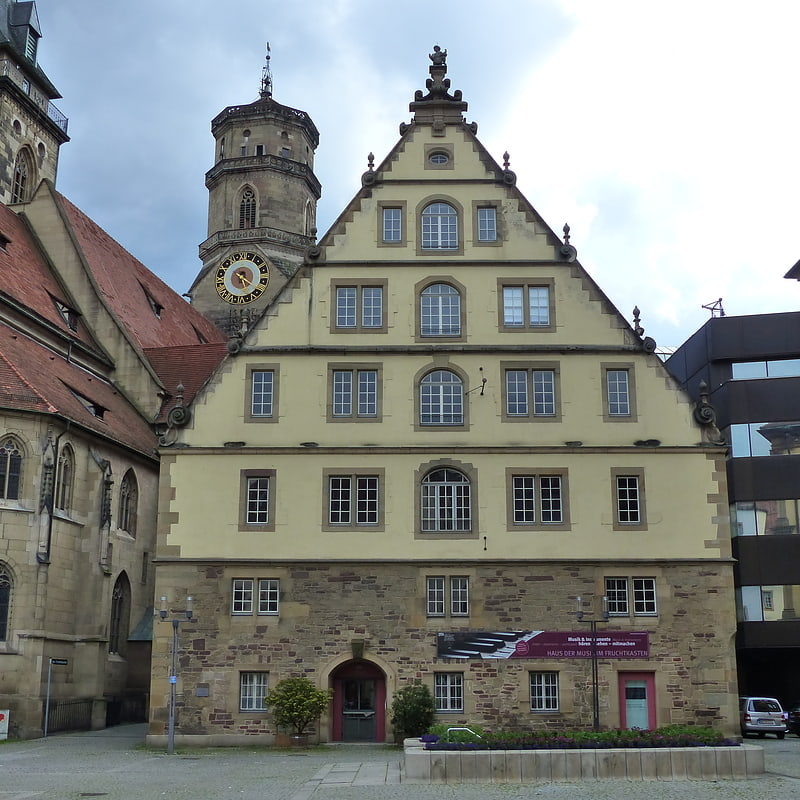
Museum. The House of Music is a music museum operated by the Landesmuseum Württemberg. It is housed in the Fruchtkasten, located on the Schillerplatz in downtown Stuttgart.[32]
Church of St. John
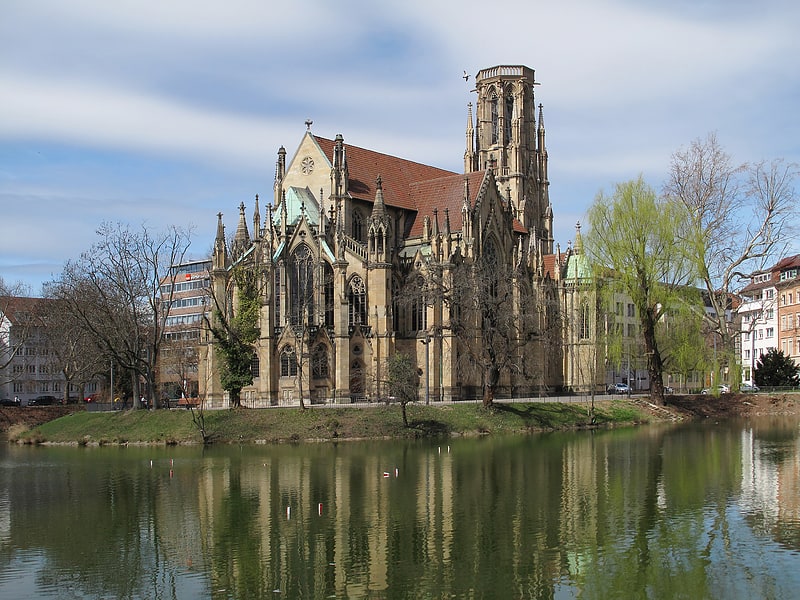
Also known as: Johanneskirche #Johanneskirche
Building. The Protestant Church of St John in Stuttgart was built in the Gothic Revival style from 1864 to 1876 by its chief architect, Christian Friedrich von Leins. It lies on a peninsula of the Feuersee, while the main entrance and tower marks the beginning of the former Johannesstraße.
After being nearly destroyed in the Second World War, the main church building was reconstructed, but the Gothic vaults were replaced with modern ones and the tower was intentionally left incomplete to serve as a sort of war memorial.[33]
Address: Feuerseepl. 10, 70176 Stuttgart (Stüttgart West)
Weißenburgpark
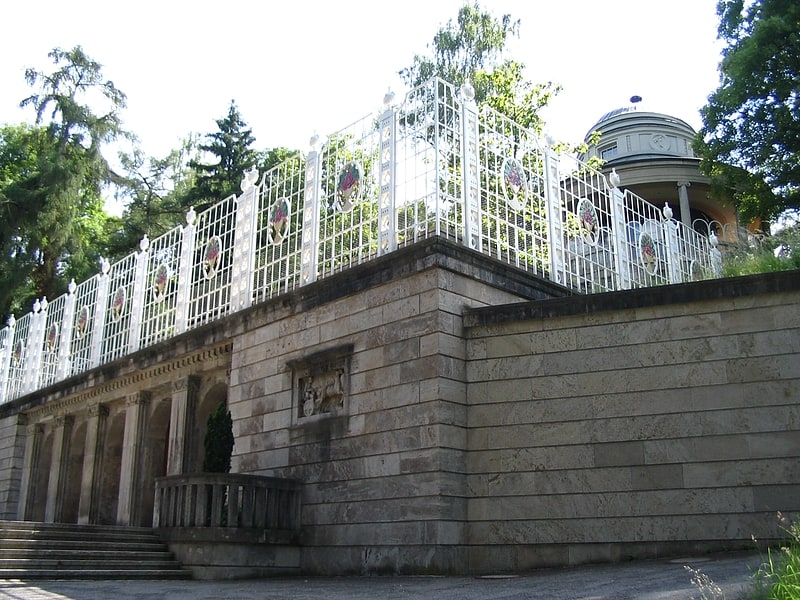
Weißenburgpark is a green space of about five hectares in the Stuttgart-Süd district of Bopser. On a hill in the park are the so-called Teahouse and the Marble Hall, which are now used as an excursion restaurant and a venue for events, respectively. The park itself is laid out with several walking paths and seating areas to linger.
At the highest point of the Weißenburgpark (about 370 meters above sea level) there is a viewing platform with a view of Stuttgart and with a memorial stone for the painter and graphic artist Reinhold Nägele. Despite the Bundesstraße 27 passing by a few meters below, it is pleasantly quiet in the park. There are a few parking spaces on Bopserwaldstraße at the foot of the park, and the park can be reached by tram lines 5, 6, 7 and 12 via the Bopser stop.
Tagblatt-Turm
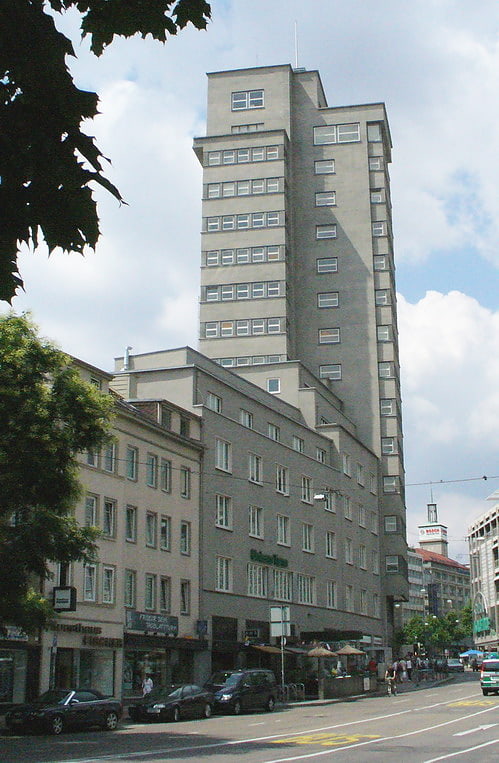
Skyscraper in Stuttgart, Germany. Tagblatt-Turm is a 61 m, the 16-storey skyscraper in Stuttgart, Baden-Württemberg, Germany.
The landmark Tagblatt-Turm was designed by architect Ernst Otto Oßwald, and is one of Germany's earliest high-rises, constructed between 1924 and 1928 and made from crushed stone and cement. Upon completion it was the tallest building in the city after the old 1905 city hall, and the highest office building in Germany. Its modern design caused controversy during construction, however, the building has since been recognized as a cultural and architectural landmark. The earliest high-rise office building erected from cement and steel was the Zeiss Building in Jena, built by the Dywidag company of Nuremberg in 1912 to house Zeiss' corporate headquarters.
From 1928 to 1943, the tower was the seat of the editorship and publishing house of the Stuttgarter Neues Tagblatt, a local newspaper; the building derives its name from this original tenant. After World War II until 1978, the tower served as the headquarters for the two newspapers Stuttgarter Zeitung and the Stuttgarter Nachrichten. In 2004, after extensive renovations, the tower was converted into a cultural center with several theatres under the name Kultur unterm Turm.[34]
Address: 61 Eberhardstraße, Stuttgart (Mitte)